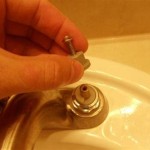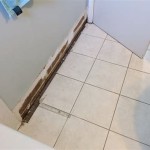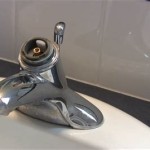How To Tighten a Kohler Bathroom Faucet Base
A loose bathroom faucet base is a common issue that can lead to wobbly faucets, water leakage around the sink, and potential damage to the countertop. Kohler faucets are known for their quality, but even they can become loose over time due to regular use and the constant vibrations of water flow. Tightening a Kohler bathroom faucet base is a manageable DIY project that can save homeowners from costly plumbing repairs and maintain the aesthetic appeal of the bathroom. This article provides a comprehensive guide on how to properly and effectively tighten a Kohler bathroom faucet base.
Before commencing any plumbing repairs, it is crucial to gather the necessary tools and materials. This ensures a smooth and efficient process, minimizing potential delays and complications. The specific tools required may vary depending on the faucet model and installation setup, but the following list covers the most common items required for tightening a Kohler bathroom faucet base:
- Adjustable Wrench: Essential for loosening and tightening nuts and bolts of varying sizes. Make sure the wrench is in good condition and fits comfortably in the hand.
- Basin Wrench (Faucet Wrench): Specifically designed for reaching and gripping nuts in tight spaces under the sink. This tool is indispensable for many faucet installations and repairs.
- Screwdrivers (Phillips and Flathead): Needed for removing handles or accessing mounting hardware. Having both types ensures compatibility with different screw types.
- Penetrating Oil (e.g., WD-40): Useful for loosening corroded or stuck nuts and bolts. Apply liberally and allow time for penetration before attempting to loosen fasteners.
- Plumber's Putty or Silicone Caulk: Required for resealing the faucet base to the countertop to prevent water leakage. Choose a type that is specifically designed for plumbing applications.
- Clean Rags or Sponges: For cleaning up any spills and wiping surfaces. Keep plenty on hand to maintain a clean and organized workspace.
- Flashlight or Headlamp: Provides better visibility in the dimly lit space under the sink. This is essential for identifying components and working with precision.
- Safety Glasses: Protects the eyes from debris and splashes. Safety should always be a top priority when working on plumbing projects.
- Gloves: Protect hands from dirt, grime, and potential chemicals. Choose gloves that provide a good grip and dexterity.
Having these tools readily available will streamline the troubleshooting and tightening process.
Key Point 1: Identifying the Cause of the Loose Faucet Base
Before attempting to tighten the faucet base, it is essential to identify the underlying cause of the looseness. This ensures that the correct approach is taken and that the problem is effectively resolved. Several factors can contribute to a loose faucet base, including:
- Loose Mounting Nuts: This is the most common cause. Over time, the nuts that secure the faucet to the sink or countertop can loosen due to vibrations and regular use.
- Corroded or Damaged Hardware: Corrosion can weaken the mounting hardware, making it difficult to tighten securely. In some cases, the hardware may need to be replaced.
- Deteriorated Plumber's Putty or Caulk: The sealant around the base of the faucet can deteriorate over time, allowing water to seep underneath and causing the faucet to become unstable.
- Worn Washers or O-Rings: These components provide a tight seal and help to secure the faucet. If they become worn or damaged, the faucet may loosen.
- Countertop Damage: In rare cases, the countertop itself may be damaged, preventing the faucet from being securely mounted. This is more likely to occur with weaker countertop materials like laminate.
To diagnose the cause, carefully inspect the faucet base and the surrounding area under the sink. Check for any signs of water leakage, corrosion, or damaged components. Attempt to wiggle the faucet to determine the extent of the looseness. Understanding the root cause will guide the repair process and ensure a long-lasting solution.
Once the cause is determined, the next step is to prepare the work area. This involves several steps to ensure safety and efficiency.
- Turn Off the Water Supply: Locate the shut-off valves for both the hot and cold water lines leading to the faucet. Turn these valves clockwise until they are completely closed. This will prevent water from flowing while working on the faucet.
- Place a Bucket Under the Sink: Position a bucket or container under the faucet to catch any residual water that may drip from the pipes. This will help to keep the work area clean and dry.
- Clear the Area: Remove any items stored under the sink that may obstruct access to the faucet mounting hardware. This will provide ample space to work comfortably and safely.
- Protect the Countertop: Place a towel or cloth over the countertop around the faucet base to protect it from scratches or damage during the repair process.
With the work area prepared, the actual tightening process can begin.
Key Point 2: Tightening the Mounting Nuts
The primary method for tightening a loose Kohler bathroom faucet base involves addressing the mounting nuts located underneath the sink. These nuts secure the faucet to the countertop and are often the source of the problem. Here's a detailed step-by-step guide:
- Locate the Mounting Nuts: Position yourself comfortably under the sink and use a flashlight to identify the mounting nuts. They are typically located on the underside of the sink or countertop, directly beneath the faucet base. There may be one or two nuts, depending on the faucet model.
- Loosen the Nuts (If Necessary): If the nuts are extremely tight or corroded, apply penetrating oil and allow it to soak for a few minutes. Then, using an adjustable wrench or a basin wrench, carefully loosen the nuts. Be careful not to damage the threads on the faucet shank.
- Reposition the Faucet: Ensure that the faucet is properly aligned on the countertop and that it is centered in the sink basin. This is important for both aesthetic and functional reasons.
- Tighten the Nuts: Using the adjustable wrench or basin wrench, tighten the mounting nuts. Apply firm, even pressure to ensure that the faucet is securely mounted. Avoid overtightening, as this can damage the faucet or the countertop. The goal is to achieve a snug fit that prevents wobbling.
- Check for Stability: After tightening the nuts, check the stability of the faucet by gently wiggling it. If it still feels loose, tighten the nuts a little more and recheck. Repeat this process until the faucet is firmly secured.
If tightening the mounting nuts does not resolve the issue, it may be necessary to inspect and replace any worn or damaged washers or O-rings. These components play a crucial role in providing a tight seal and preventing leaks.
To replace the washers or O-rings, follow these steps:
- Turn Off the Water Supply: Ensure that the water supply to the faucet is turned off.
- Disconnect the Water Lines: Disconnect the water supply lines from the faucet tailpieces. Use an adjustable wrench to loosen the connections, being careful not to damage the pipes.
- Remove the Faucet: Carefully remove the faucet from the sink or countertop.
- Disassemble the Faucet Base: Depending on the faucet model, you may need to disassemble the faucet base to access the washers or O-rings. Refer to the faucet's installation instructions for specific guidance.
- Inspect and Replace: Inspect the washers and O-rings for any signs of wear, damage, or deterioration. Replace any worn or damaged components with new ones of the same size and type.
- Reassemble the Faucet: Reassemble the faucet base and reinstall the faucet on the sink or countertop.
- Reconnect the Water Lines: Reconnect the water supply lines to the faucet tailpieces. Tighten the connections securely, but avoid overtightening.
- Test for Leaks: Turn on the water supply and check for any leaks around the faucet base and water line connections. If any leaks are detected, tighten the connections further or replace any faulty components.
Replacing worn washers or O-rings can significantly improve the stability and functionality of the faucet. With the faucet tightened and any worn components replaced, the final step is to reseal the faucet base.
Key Point 3: Resealing the Faucet Base
Over time, the plumber's putty or caulk around the base of the faucet can dry out, crack, and lose its ability to create a watertight seal. This can lead to water seeping under the faucet base and causing damage to the countertop or the cabinet below. Resealing the faucet base is an important step in maintaining the integrity of the faucet installation. The process involves the following steps:
- Remove Old Sealant: Using a utility knife or a plastic scraper, carefully remove the old plumber's putty or caulk from around the base of the faucet. Be thorough in removing all traces of the old sealant to ensure a clean surface for the new sealant to adhere to.
- Clean the Surface: Clean the area around the faucet base with a damp cloth and a mild detergent. This will remove any dirt, grime, or residue that may interfere with the adhesion of the new sealant. Allow the surface to dry completely before proceeding.
- Apply New Sealant: Apply a bead of new plumber's putty or silicone caulk around the base of the faucet. The type of sealant used depends on personal preference and the specific requirements of the faucet and countertop material. Plumber's putty is generally easier to work with, while silicone caulk provides a more durable and waterproof seal.
- Smooth the Sealant: Use your finger or a sealant smoothing tool to smooth the sealant and create a clean, professional-looking finish. Remove any excess sealant with a damp cloth.
- Allow to Cure: Allow the sealant to cure according to the manufacturer's instructions. This typically takes 24 to 48 hours. Avoid using the faucet during this time to allow the sealant to fully harden and create a watertight seal.
Resealing the faucet base not only prevents water leakage but also enhances the aesthetic appearance of the faucet installation. With the faucet base tightened and resealed, the final step is to test the faucet and clean up the work area.
After completing the tightening and resealing process, it is essential to test the faucet thoroughly to ensure that all issues have been resolved.
- Turn on the Water Supply: Slowly turn on the hot and cold water supply valves. Check for any leaks around the faucet base, water line connections, and faucet handles.
- Operate the Faucet: Turn the faucet on and off several times, checking for smooth operation and proper water flow. Ensure that there are no drips or leaks from the faucet spout.
- Check for Stability: Gently wiggle the faucet to ensure that it is firmly secured to the countertop. If it still feels loose, recheck the mounting nuts and tighten them as needed.
If any leaks or other issues are detected, address them promptly to prevent further damage. Once the faucet is functioning properly, clean up the work area.
After confirming that the faucet is properly tightened and sealed, clean up the work area. This includes removing any tools, materials, and debris from under the sink. Wipe down the countertop and the sink basin to remove any dirt or grime. Dispose of any old sealant, washers, or O-rings properly. This final step ensures a clean and organized bathroom.

How To Fix Loose Sink Faucet

How To Fix Leaky Bathroom Faucet Kohler Two Handle
How To Fix The Base Of A Kitchen Faucet That Moves Because It Was Not Installed Properly Do I Use Caulk Plumber S Putty Or Stabilize Some Other Way Quora

Kohler Sundae 4 In Centerset 2 Handles Bathroom Faucet Matte Black K R28796 4d Bl The Home Depot

How To Fix A Leaky Faucet Single Handle By Kohler Best Plumbing 206 633 1700

Faucet Leaking At Base Of Spout Irv2 Forums

Kohler K 10272 4 Bn Forte Widespread Bathroom Faucet With Build Com

Kohler K 10270 4 Bn Forte Centerset Bathroom Faucet Free Build Com

Kohler K 10272 4 Forte Widespread Bathroom Faucet Nickel Com

How To Tighten A Loose Bathroom Faucet
Related Posts







